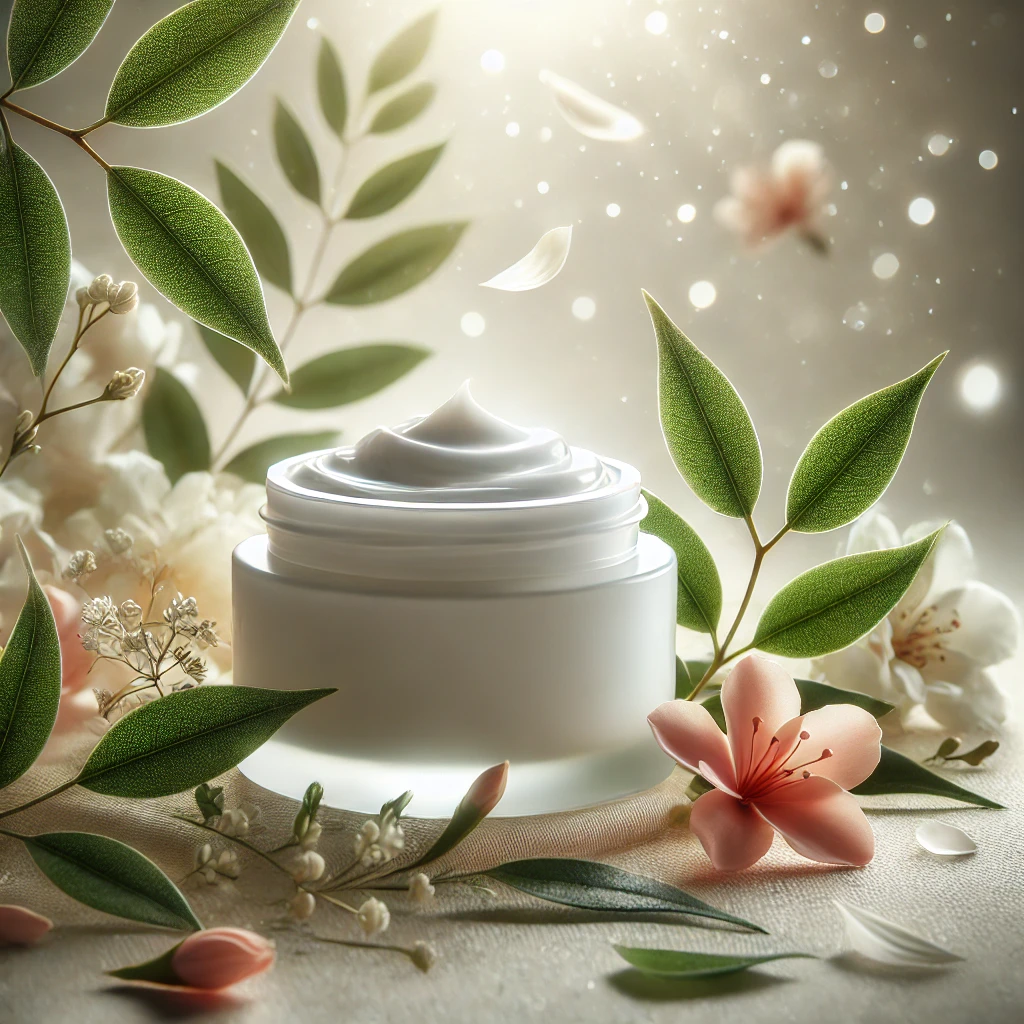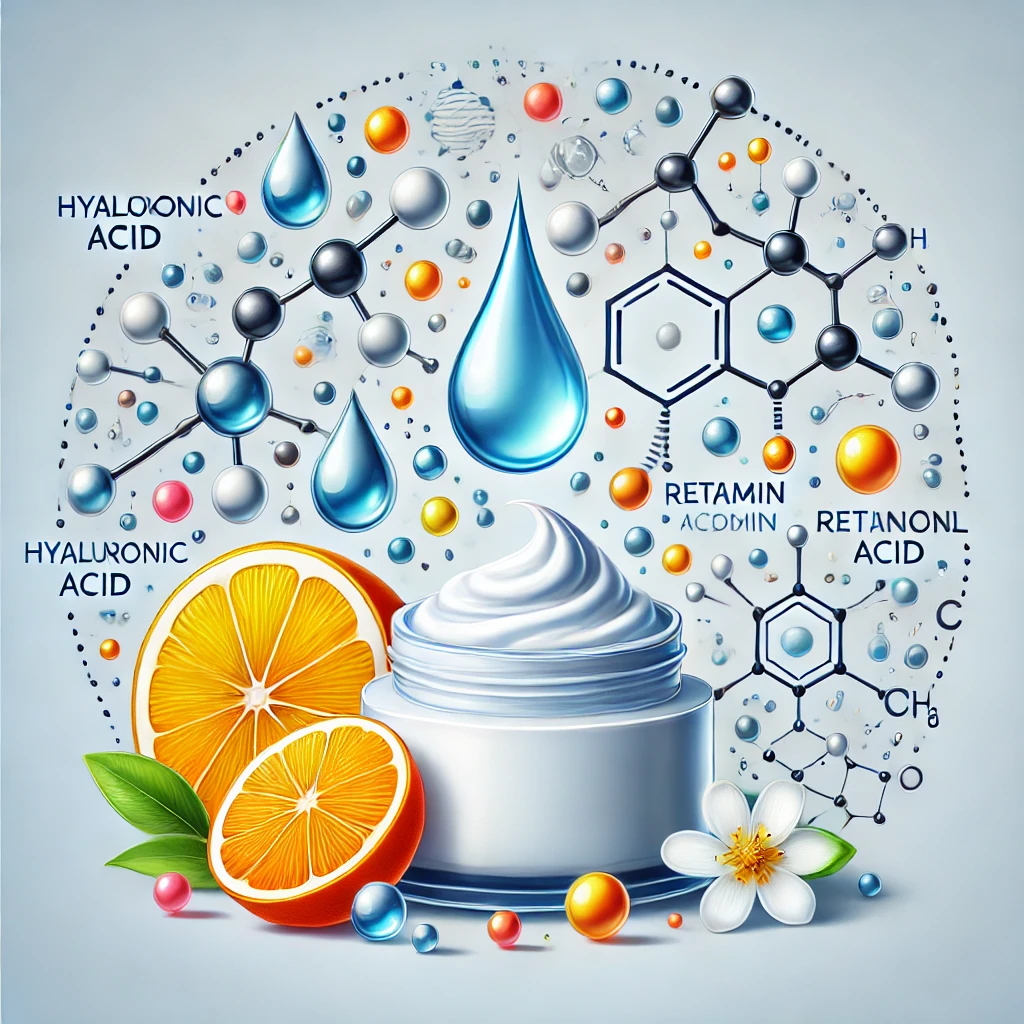Aging is a natural process, but it doesn’t mean your hands have to show it. While we often focus on our faces, our hands are one of the first areas to betray our age. That’s where anti-aging hand cream comes to the rescue. Imagine your hands as a time machine—wouldn’t you want them to reflect your youthful energy rather than years of hard work? Let’s dive deep into everything you need to know about these miraculous products.
Table of Contents
1. What is Anti-Aging Hand Cream?

Anti-aging hand cream is a specially designed skincare product aimed at combating the visible signs of aging on your hands. Unlike regular moisturizers, these creams go beyond hydration, incorporating active ingredients that specifically target issues such as fine lines, wrinkles, sunspots, and loss of elasticity.
Imagine your hands as a canvas exposed to the elements every day. Without proper care, they can develop cracks, discoloration, and other “wear and tear.” Anti-aging hand cream acts as a protective and reparative layer, much like varnish for a painting, preserving its beauty while enhancing its durability.
Key Features of Anti-Aging Hand Cream:
- Hydration: Provides deep and long-lasting moisture to combat dryness.
- Rejuvenation: Contains active ingredients like retinol and peptides to repair and restore skin.
- Protection: Often includes SPF to shield hands from UV damage.
- Brightening: Reduces the appearance of age spots and discoloration.
In short, anti-aging hand cream isn’t just about looking good—it’s about maintaining the health and resilience of your hands as they face daily challenges.
2. Why Do Your Hands Age So Quickly?

Have you ever wondered why your hands seem to age faster than other parts of your body? The answer lies in their unique structure and daily exposure to harsh conditions.
Your hands are like the “frontline soldiers” of your body. They’re constantly exposed to sunlight, pollution, water, and a myriad of irritants. Unlike the skin on your face, which often benefits from regular care and multiple protective layers, the skin on your hands is thinner and contains fewer oil glands. This makes it more prone to dryness, cracking, and wrinkles.
Key Reasons for Accelerated Aging of Hands:
- Constant Exposure: Hands are rarely covered and face sunlight, cold weather, and environmental pollutants directly.
- Frequent Washing: Using soaps and sanitizers strips away natural oils, leaving the skin dry and vulnerable.
- Neglect: While many focus on facial skincare, hands are often overlooked, receiving little to no protection or nourishment.
- Thinner Skin: The back of the hands has less fat, making veins, wrinkles, and age spots more noticeable as collagen breaks down.
- UV Damage: Without sunscreen, hands are highly susceptible to sun-induced aging like dark spots and fine lines.
Think of your hands as a well-read book—every page (or wrinkle) tells a story of what they’ve endured. But with the right care, you can rewrite that story, keeping your hands soft, smooth, and youthful for years to come.
3. The Key Ingredients in Anti-Aging Hand Cream

Not all anti-aging hand creams are created equal. The secret to their effectiveness lies in the ingredients they contain. These components work together to hydrate, repair, and protect your skin, giving your hands a youthful and healthy appearance.
Essential Ingredients to Look For:
- Hyaluronic Acid:
Known as the ultimate hydrator, hyaluronic acid holds up to 1,000 times its weight in water. This ingredient plumps up the skin, reducing the appearance of fine lines and dryness. - Retinol:
A derivative of vitamin A, retinol stimulates collagen production and promotes cell turnover. It helps reduce wrinkles and improves the skin’s overall texture, giving your hands a smoother look. - Vitamin C:
A powerful antioxidant, vitamin C brightens skin tone, fades age spots, and protects against environmental damage caused by free radicals. - Niacinamide:
This form of vitamin B3 helps improve skin elasticity, even out skin tone, and strengthen the skin’s protective barrier. - SPF:
Sunscreen is non-negotiable in preventing UV damage, one of the leading causes of premature aging. Choose a hand cream with at least SPF 30. - Shea Butter and Natural Oils:
Ingredients like shea butter, almond oil, and coconut oil provide deep nourishment, keeping hands soft and smooth. - Peptides:
Peptides signal the skin to produce more collagen and elastin, improving skin firmness and reducing wrinkles.
Why Ingredients Matter:
The combination of these ingredients targets specific concerns such as dryness, loss of elasticity, and pigmentation. Reading the ingredient list is crucial—avoid harsh chemicals, parabens, and artificial fragrances that can irritate the skin or counteract the benefits.
4. How to Choose the Best Hand Cream for You

When shopping for the ideal anti-aging hand cream, it’s easy to feel overwhelmed by the sheer number of options available. The key is to focus on what your hands truly need and select a product tailored to those concerns.
Steps to Find Your Perfect Match:
- Identify Your Skin Type:
Do you have dry, oily, or sensitive skin? Choose a formula that complements your skin type. - Prioritize Active Ingredients:
Look for the ingredients discussed earlier, especially hyaluronic acid, retinol, and SPF. - Consider Your Lifestyle:
Are you outdoors often? Opt for a hand cream with a higher SPF. Wash your hands frequently? Choose a fast-absorbing, non-greasy formula. - Read Reviews and Recommendations:
Feedback from other users can offer valuable insights into a product’s effectiveness. - Test for Sensitivity:
If you have sensitive skin, patch test a small amount on your wrist before full application.
Affordable vs. Luxury:
Don’t be swayed by price alone. Some affordable options work just as well as luxury creams. Focus on the formulation rather than the brand name.
5. Application Tips for Maximum Effectiveness

Using an anti-aging hand cream isn’t just about slathering it on and hoping for the best. Proper application techniques can enhance the cream’s effectiveness and ensure that your hands reap the full benefits.
Steps for Optimal Application:
- Cleanse First:
Wash your hands with a gentle soap to remove dirt and bacteria. Avoid harsh soaps that strip away natural oils. - Apply After Washing:
The best time to apply hand cream is when your hands are still slightly damp. This locks in moisture. - Use the Right Amount:
A pea-sized amount is usually sufficient. Overusing the product can leave your hands feeling greasy. - Massage Thoroughly:
Massage the cream into your skin, focusing on areas prone to wrinkles and dryness, like knuckles and the back of your hands. - Don’t Forget Cuticles:
Gently work the cream into your cuticles to keep them hydrated and healthy. - Apply Before Bed:
Nighttime is ideal for applying a richer cream, as it has hours to work without interruption.
Pro Tip: For an extra boost, wear cotton gloves after applying cream at night to help your skin absorb the product fully.
By understanding the unique needs of your hands, the power of ingredients, and proper application techniques, you’re on your way to maintaining youthful, radiant hands for years to come. Shall I expand on any other headings or focus on additional content?
6. The Benefits of Regular Use

Consistency is the golden rule when it comes to skincare, and anti-aging hand creams are no exception. Incorporating a high-quality hand cream into your daily routine can work wonders for your skin over time.
Key Benefits of Regular Use
- Hydration and Softness
Dry, rough hands are a common sign of aging. Regular application ensures your skin stays moisturized, soft, and supple. Hydrated hands are not only more comfortable but also appear healthier and more youthful. - Reduction in Wrinkles
Anti-aging hand creams that include retinol and peptides help boost collagen production, reducing the appearance of fine lines and wrinkles. Your hands will look smoother and more resilient over time. - Lightening of Age Spots
Ingredients like vitamin C and niacinamide target pigmentation issues, fading dark spots and evening out skin tone. This can restore your skin’s brightness and clarity. - Protection Against Environmental Damage
Daily exposure to sun, wind, and pollutants can take a toll on your hands. Anti-aging creams with SPF and antioxidants act as a shield, preventing further damage and maintaining skin health. - Improved Skin Elasticity
Collagen-boosting ingredients work to firm and tighten the skin, reducing sagging and maintaining a youthful appearance. - Long-Term Prevention
Starting early and using hand cream consistently helps prevent premature aging, ensuring your hands age gracefully.
7. Common Myths About Hand Creams

Despite their popularity, anti-aging hand creams are surrounded by misconceptions. Let’s debunk some of the most common myths.
Myth #1: All Hand Creams Are the Same
Many believe that any moisturizer will do the trick. However, anti-aging hand creams are specifically formulated with ingredients that address aging concerns like wrinkles and age spots. Regular body lotion lacks these specialized components.
Myth #2: Expensive Means Better
Price does not always equal quality. Affordable options can deliver excellent results if they contain effective ingredients like hyaluronic acid, retinol, and SPF. Always prioritize formulation over cost.
Myth #3: You Only Need Hand Cream in Winter
While winter can exacerbate dryness, your hands need care year-round. UV rays and pollution are constant threats, regardless of the season.
Myth #4: Hand Creams Work Instantly
Anti-aging products require consistent use over weeks or months to show significant improvements. Patience and regular application are key.
Myth #5: Hand Cream is Unnecessary If You Use Gloves
While gloves offer physical protection from cold and chemicals, they don’t address hydration, repair, or sun damage. Hand cream is an essential complement to wearing gloves.
8. DIY Anti-Aging Hand Creams You Can Make at Home

For those who love a natural, hands-on approach, creating your own anti-aging hand cream can be both fun and effective. Homemade creams allow you to control the ingredients and customize them for your skin’s needs.
Simple DIY Recipe
Ingredients:
- 2 tablespoons shea butter
- 1 tablespoon coconut oil
- 1 teaspoon almond oil
- A few drops of vitamin E oil
- 2-3 drops of lavender or rose essential oil (optional)
Instructions:
- Melt the shea butter and coconut oil together in a double boiler.
- Remove from heat and mix in almond oil, vitamin E oil, and essential oil.
- Pour the mixture into a small jar and allow it to cool and set.
- Use daily for soft, hydrated hands.
Benefits of DIY Hand Cream
- Completely natural and free of harsh chemicals.
- Customizable to suit your preferences and skin type.
- Cost-effective and fun to make!
9. Affordable vs. Luxury Hand Creams: Does Price Matter?

When it comes to anti-aging hand creams, one of the most debated topics is whether luxury brands are worth the splurge. The answer isn’t black and white—it depends on what you value most in a product.
Affordable Options
Affordable hand creams often use high-quality ingredients but may lack luxurious packaging or added fragrances. Brands like Neutrogena, Aveeno, and Eucerin offer excellent options for budget-conscious buyers.
Pros:
- Cost-effective
- Widely available
- Often focus on core, effective ingredients
Cons:
- May lack luxurious textures or scents
- Packaging might not be as durable or appealing
Luxury Options
High-end hand creams, such as those from La Mer or L’Occitane, often include rare ingredients, richer textures, and elegant packaging. However, they might not always be more effective than affordable alternatives.
Pros:
- Enhanced sensory experience (scent, texture, packaging)
- May include unique or exotic ingredients
Cons:
- Higher price point
- Effectiveness may not always justify the cost
Bottom Line
Whether you choose affordable or luxury depends on your priorities. If you’re ingredient-focused, you can find excellent options at any price point.
10. Environmental Factors and Your Hands

Your hands are constantly exposed to the environment, which accelerates aging. Understanding these factors can help you take proactive measures to protect your skin.
Factors That Impact Hand Aging
- Sun Exposure
UV rays damage collagen and cause age spots. Sunscreen in your hand cream is non-negotiable. - Cold Weather
Dry, cold air saps moisture from your skin, leading to cracks and irritation. - Pollution
Free radicals in the air can break down skin cells, causing premature aging. - Frequent Washing
Hot water and harsh soaps strip the skin of its natural oils.
Protective Measures
- Always wear gloves in cold weather or when handling harsh chemicals.
- Use a hand cream with antioxidants to combat pollution.
- Apply SPF daily, even during cloudy days.
11. The Role of Sunscreen in Hand Care

One of the most overlooked aspects of hand care is protecting them from the sun. Hands are exposed to UV rays more frequently than other parts of the body, and this constant exposure accelerates signs of aging like wrinkles, dryness, and age spots.
Why Sunscreen Matters for Your Hands
- Prevents Age Spots: UV rays trigger melanin production, leading to dark spots commonly seen on the backs of hands.
- Protects Collagen: Sun exposure breaks down collagen, the protein responsible for skin elasticity and firmness.
- Reduces Risk of Skin Cancer: The skin on your hands is thin, making it more susceptible to damage and, potentially, skin cancer.
Tips for Using Sunscreen on Your Hands
- Choose a hand cream with broad-spectrum SPF 30 or higher.
- Reapply sunscreen after washing your hands, especially during outdoor activities.
- If you drive often, pay special attention to your hands, as UV rays penetrate car windows.
Think of sunscreen as a daily shield for your hands, protecting them from visible and invisible damage.
12. When to Start Using Anti-Aging Products

There’s a common misconception that anti-aging products are only for older individuals. The truth is, the earlier you start, the better. Preventative care is far more effective than trying to reverse signs of aging.
Best Age to Start Using Hand Creams
- 20s-30s: Begin using a basic hand cream with SPF to protect against environmental damage and dryness.
- 40s-50s: Introduce anti-aging ingredients like retinol, peptides, and vitamin C to address emerging fine lines and pigmentation.
- 60s and Beyond: Opt for richer, reparative formulas to tackle advanced signs of aging and loss of elasticity.
Pro Tip: Even if you’re late to the game, starting now can still yield noticeable improvements over time.
13. Can Hand Creams Really Reverse Aging?

This is one of the most frequently asked questions when it comes to anti-aging products. While hand creams can’t completely reverse the aging process, they can significantly improve the appearance and health of your skin.
What Anti-Aging Hand Creams Can Do:
- Minimize Fine Lines: Ingredients like retinol and peptides boost collagen production, reducing wrinkles.
- Fade Age Spots: Vitamin C and niacinamide lighten pigmentation and brighten skin tone.
- Improve Skin Texture: Exfoliating agents like lactic acid can smooth out rough patches.
- Enhance Hydration: Humectants like hyaluronic acid plump the skin, making it appear more youthful.
What They Can’t Do:
- Eliminate deep wrinkles or advanced damage completely.
- Replace professional treatments like laser therapy or chemical peels.
Think of anti-aging hand cream as your first line of defense—effective for prevention and maintenance but not a magic eraser.
14. Daily Habits for Youthful Hands

Achieving and maintaining youthful hands requires more than just the right products. Your daily habits play a crucial role in how your hands look and feel.
Essential Habits to Adopt:
- Wear Gloves: Use gloves while washing dishes, gardening, or cleaning with harsh chemicals to protect your hands from damage.
- Hydrate Internally: Drink plenty of water to maintain skin elasticity and hydration from the inside out.
- Exfoliate Weekly: Remove dead skin cells with a gentle scrub or chemical exfoliant to allow your hand cream to penetrate more effectively.
- Moisturize Frequently: Apply hand cream after every wash to replenish lost moisture.
- Avoid Hot Water: Wash your hands with lukewarm water to prevent stripping natural oils.
Nighttime Routine for Maximum Results:
- Apply a rich hand cream before bed.
- Massage it into your skin for better absorption.
- Wear cotton gloves overnight for deep hydration.
These small, consistent actions can have a big impact on the health and appearance of your hands over time.
15. Conclusion: Embrace the Journey to Radiant Hands
Your hands work hard every day, and they deserve as much care and attention as the rest of your body. By incorporating a high-quality anti-aging hand cream into your routine and adopting protective habits, you can maintain smooth, youthful hands that stand the test of time. Remember, it’s never too early—or too late—to start caring for your skin.
Your hands tell your story; let that story reflect beauty, vitality, and self-care.
FAQs
1. How long does it take for anti-aging hand cream to work?
Results vary, but most users notice improvements in hydration and texture within a week. Visible reduction in wrinkles or age spots may take 4-6 weeks of consistent use.
2. Can I use anti-aging hand cream on other parts of my body?
Yes, anti-aging hand creams can be used on other areas like elbows or knees, but they’re specifically formulated for the hands’ unique needs.
3. Is anti-aging hand cream safe for sensitive skin?
Most hand creams are gentle, but if you have sensitive skin, opt for fragrance-free and hypoallergenic formulas. Always patch test before use.
4. How often should I apply hand cream?
For best results, apply hand cream at least twice daily—morning and night—and after every wash.
5. Can I use regular sunscreen instead of hand cream with SPF?
Yes, but hand creams with SPF are more convenient and often contain additional ingredients to address aging concerns.






